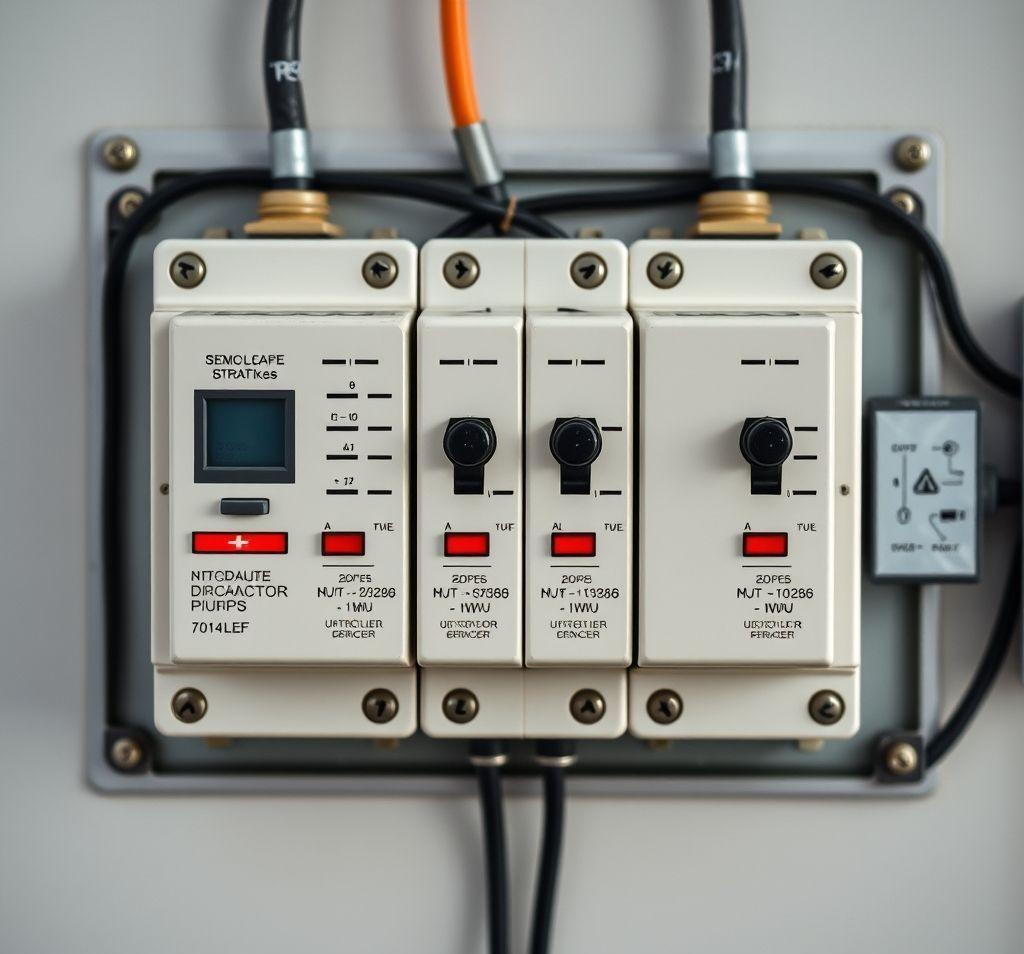The Next Generation: Smart Circuit Breakers with Built-In Energy Monitoring – Are They the Future of Home Energy Management?
The world of home energy management is constantly evolving, seeking smarter and more efficient solutions. One emerging technology poised to revolutionize how we understand and control our energy consumption is the smart circuit breaker with built-in energy monitoring. These devices promise greater insights, enhanced safety, and ultimately, a more sustainable approach to powering our homes. This article delves into the features, benefits, costs, and future prospects of this innovative technology.
Unveiling the Power of Smart Circuit Breakers
Traditional circuit breakers are designed for one primary function: to protect electrical circuits from overcurrent, preventing fires and equipment damage. Smart circuit breakers retain this crucial safety feature, but add a layer of intelligence by integrating energy monitoring capabilities. These advanced devices use sensors to track the electrical current flowing through each circuit in real-time. This data is then transmitted wirelessly to a central hub or directly to a smartphone app, providing homeowners with detailed insights into their energy usage patterns.
Beyond basic monitoring, many smart circuit breakers offer additional features. These can include:
- Remote Control: Turn circuits on or off remotely via a smartphone app, ideal for resetting tripped breakers or controlling appliances while away from home.
- Customizable Alerts: Receive notifications on your phone or other devices when a circuit is nearing its maximum load, potentially preventing overloads and extending the lifespan of your appliances.
- Energy Usage Breakdown: Identify which appliances or circuits are consuming the most energy, allowing you to make informed decisions about energy conservation.
- Integration with Smart Home Systems: Connect to other smart home devices, such as smart thermostats and lighting systems, to create a unified energy management ecosystem.
- Historical Data Analysis: Track energy consumption over time to identify trends, compare usage across different periods, and measure the impact of energy-saving initiatives.
Benefits Galore: Why Consider Smart Circuit Breakers?
The advantages of adopting smart circuit breakers extend far beyond simple convenience. Here’s a breakdown of the key benefits:
- Enhanced Safety: Proactive overload detection helps prevent electrical fires and equipment damage, providing a safer living environment. Remote shut-off capabilities can also be crucial in emergency situations.
- Energy Savings: By providing detailed energy usage data, homeowners can identify and eliminate energy waste. This can lead to significant reductions in monthly utility bills and a smaller carbon footprint. Imagine discovering that an old refrigerator in the garage is a major energy hog – you can then choose to replace it with a more efficient model.
- Improved Appliance Lifespan: Preventing overloads and identifying malfunctioning appliances can help extend the lifespan of your electrical equipment, saving you money on replacements in the long run.
- Convenience and Control: Remote control and monitoring capabilities provide unparalleled convenience and control over your home’s electrical system, accessible from anywhere with an internet connection.
- Increased Home Value: Smart home features are becoming increasingly desirable to homebuyers, and smart circuit breakers can be a valuable addition that increases the market value of your property.
The Cost Factor: Is the Investment Worth It?
While the benefits of smart circuit breakers are compelling, the initial cost is a significant consideration. Smart circuit breakers are considerably more expensive than traditional circuit breakers. A single smart breaker can range from $50 to $200 or more, depending on its features and brand. Outfitting an entire home with smart circuit breakers can easily run into the thousands of dollars.
Furthermore, professional installation is typically required, adding to the overall cost. Replacing a circuit breaker involves working with electrical wiring, which can be dangerous if not done correctly. Hiring a qualified electrician is essential to ensure safety and compliance with local electrical codes.
However, it’s important to consider the long-term return on investment. The energy savings achieved through smart circuit breaker monitoring can offset the initial cost over time. The exact payback period will depend on factors such as your energy consumption habits, the price of electricity in your area, and the extent to which you actively manage your energy usage based on the data provided. Also, consider the increased safety and protection of your devices, which could prevent bigger costs in the future.
The Future is Bright: When Will Smart Circuit Breakers Become Mainstream?
While smart circuit breakers are not yet ubiquitous in homes, several factors suggest that their adoption will continue to grow in the coming years.
Technological Advancements: As technology advances, the cost of smart circuit breakers is likely to decrease, making them more accessible to a wider range of consumers. We can also expect to see further innovations in features and functionality.
Increasing Energy Awareness: Growing awareness of environmental issues and rising energy costs are driving demand for energy-efficient solutions. Smart circuit breakers offer a tangible way for homeowners to take control of their energy consumption and reduce their carbon footprint.
Government Incentives and Regulations: Governments and utilities are increasingly offering incentives and rebates for energy-efficient home upgrades. These programs can help offset the cost of installing smart circuit breakers, further accelerating their adoption.
Smart Home Ecosystem Growth: The proliferation of smart home devices and platforms is creating a more integrated and seamless experience for homeowners. Smart circuit breakers fit seamlessly into this ecosystem, enhancing the overall value proposition of smart home technology.
Based on these trends, it’s reasonable to expect that smart circuit breakers will become increasingly mainstream in the next 5-10 years, as costs come down and awareness of their benefits grows. New construction homes may even begin to include them as a standard feature, similar to how smoke detectors and other safety devices are now commonplace.
Conclusion
Smart circuit breakers with built-in energy monitoring represent a significant leap forward in home energy management. Offering enhanced safety, potential cost savings through optimized energy usage, and increased convenience, they present a compelling value proposition. Although the initial investment may be a barrier for some, decreasing costs, growing environmental awareness, and integration with smart home ecosystems point towards a future where these devices are commonplace, empowering homeowners to take control of their energy consumption and build a more sustainable future.



